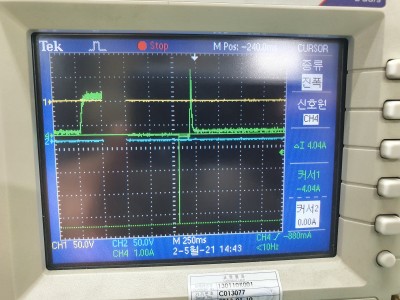Other Parts Discussed in Thread: BQ78350, , BQ76930, LM5069, LM5060
Hello
We are developing a battery pack for e-bikes.
Our problem is inrush current.
The ic we use is as follows.
We developed the product using BQ76930 + BQ78350 + BQ76200.
Our FET circuit diagram is as follows.
https://drive.google.com/file/d/1OECMG2Z0VyjeFhBfp6cE12HQRdz6l6iY/view?usp=sharing
Secondary battery lithium-ion battery pack: 42V
Operating voltage: 30V ~ 42V
Discharge maximum current: 120A
Charging maximum current: 19A
The charge/discharge connector uses a single connector (charge connector = discharge connector).
The charging FET and the discharging FET are connected in series (the charging/discharging fet is turned on at the same time).
The circuit is made of N-channel High-side.
When the battery pack is connected to the charger, the charging/discharging fet is turned on first,
Then, as the charger's relay is attached, an inrush current is generated as shown in the figure below.

Time: about 40ms
Current: 40A max
Voltage: 50V max
The occurrence is set up and down as above.
Is there any good solution to this?
Since the charging/discharging connector is the same, it must flow normally even if it flows over 120A during discharge,
and the inrush current that occurs when the relay is attached or when the fet is turned on must be prevented.
If you have a good idea, please advise.
Thank you.


